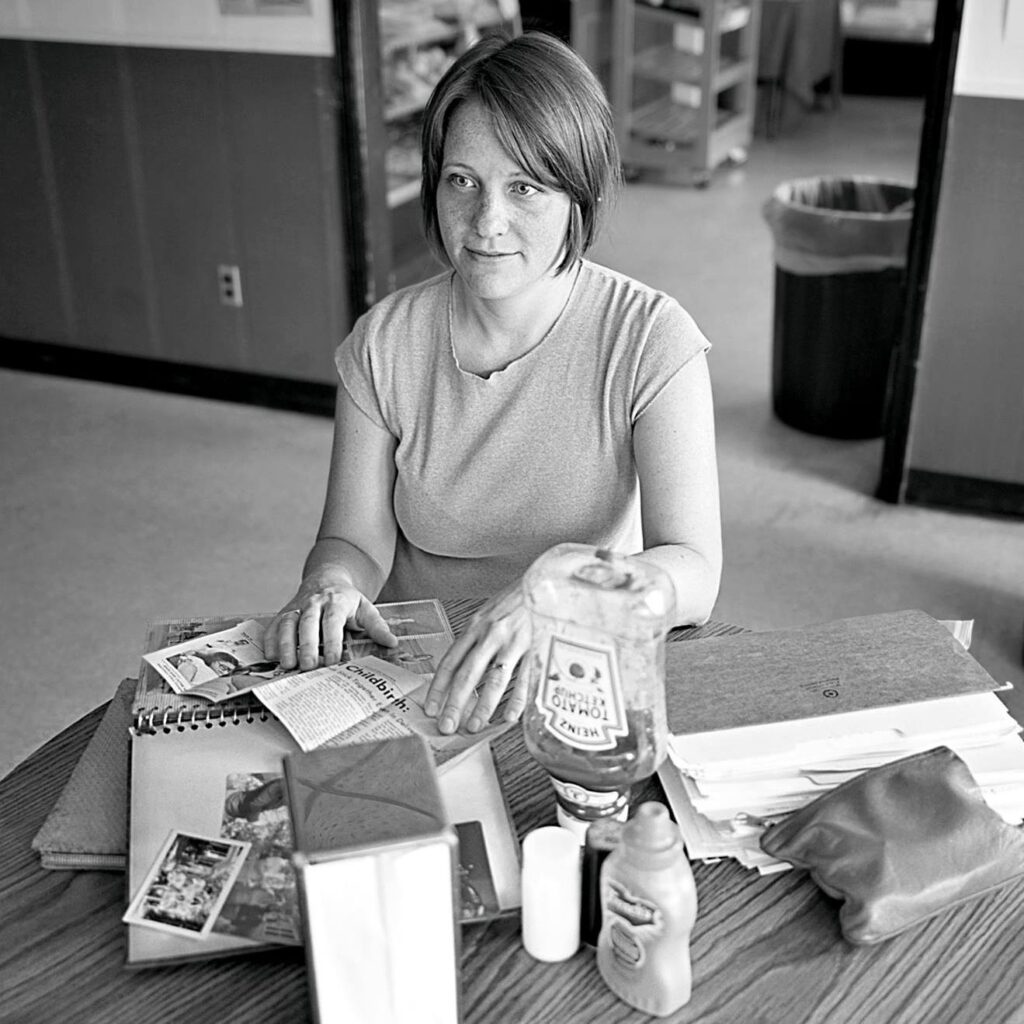Jaz Reid misses the water. A native of Hampton, Virginia, she grew up surrounded by the Chesapeake Bay. Here in Atlanta, she misses fishing, crabbing, even just looking at the stuff.
“We hang out at the beach, even when it’s cold,” she told me following a Spring Break visit home. “It’s just what you do.”
Jaz is a Junior at Georgia State University. From her high-rise student apartment in downtown Atlanta, there’s no water in sight. Maybe that’s why she volunteered through an Urban Ecology class to help launch a team with Atlanta Creek League.
I started Atlanta Creek League last fall as a kind of experiment in connecting city-dwellers like Jaz with their hidden waterways. I still have no idea if it’ll work.
Conspiring with artists Sarah Lawrence and Jamie Allen, we copied the structure of an intramural sports league and the style of classic jerseys to brand Atlanta’s creeks. With seed money from Chattahoochee Now, Georgia River Network, and American Rivers, we launched three river “divisions”—the Chattahoochee, Flint, and South Rivers, spread across 20 creek “teams.”
Atlanta Creek League makes it easy to find your local creek—all you have to do is enter your address—and quickly get plugged into stewardship activities in your area. Once you join a team, you can earn points for taking care of the creek or simply visiting and enjoying your creek. And, of course, you can buy t-shirts and stickers emblazoned with your creek team.
Will people actually compete in the league? Form teams, create mascots, meet up with their rivals for some friendly competition? That would be amazing. But for me, it’s about more than just selling merch.
We all live in a watershed, but most of us don’t know which one or why it matters. Part of this is because most ATLiens can’t see water or touch it from the vantage of their homes. But I’ve seen how people fall in love with and organize around Atlanta’s troubled waters. In fact, I’m convinced that meaningful engagement with our creeks is one way we can fix Atlanta.
The Flint River made me into a water nerd. I learned it was piped under Hartsfield-Jackson Atlanta International Airport while researching my 2017 book Flight Path, which is about growing up on the southside as the Atlanta airport swallowed my neighborhood.
I read about creeks piped and relocated by the airport’s expansion, but I never actually saw water until I started working with Ryan Gravel on a project to revive the Flint River’s headwaters.
Ben Emanuel, Southeast Conservation Director for American Rivers, took us on a “source trek” to find the headwaters of the Flint in East Point. He explained the shape of the Flint watershed, which actually encompassed my childhood homes in Mountain View and Forest Park. From looking at maps and down storm drains I learned the names of my childhood terrain: Mud Creek, Jester’s Creek, and the Flint River.
No signs marked these creeks. Well, except for signs that said “no dumping” and “no trespassing.”
When we started Finding the Flint, our team came up with a set of ambitious concepts for rewilding the headwaters near the airport. We produced renderings of what the restored river could look like in several places—barbed wire fences deleted, concrete flumes replaced by a meandering creek, native plants, a blooming meadow crossed by a boardwalk trail, etc. What it would look like to celebrate these urban creeks instead of, as English writer Roger Deakin put it, “tucking it away out of sight, corseted in a concrete pipe.”
We wanted to rewrite the narrative about the southside’s neglected river, but most people in Atlanta didn’t even know the Flint existed. It’s a dirty secret—out of sight, out of mind.
This is generally how we treat all of our creeks in this city.
Atlanta has countless creeks, brooks, branches, and rivers—an embarrassment of waterway riches. But the city was built for trains and cars in a way that ignores geographical features, which is what architect Carolyn Steel called “the final emancipation of the city from any apparent relationship with nature at all.”
What creek are you near now? What watershed are you in now? Most people can’t say and it’s not easy to find out. It’s a problem for those of us working in the field of urban conservation, but I think it reveals a larger problem of our disconnection from the landscape where we spend our days. Like Jaz, we all miss the water.
As an experiment of sorts, I asked my GSU volunteers to try using Atlanta Creek League to find their local creek and either join or create a creek team. Right away, I learned that we need to make dozens more.
Sabrina lives in Lilburn, so I guess we need a fourth division for the Yellow River. Yash lives near an unnamed tributary of Peachtree Creek by the Lindbergh MARTA station—investigating the name will be his first assignment. Noor lives in the Little Mulberry River watershed in north Gwinnett County. I learned from these students that Atlanta, like its creeks, is not contained by political boundaries.
Only Jaz could join an established team. Her apartment building sits in the Clear Creek watershed, Chattahoochee Division. Aptly named, the creek is invisible downtown and only daylights from underground pipes in the Old Fourth Ward, where it appears as a network of detention ponds and storm drains.
On an overcast Friday in March, we went for a ramble through her watershed to find the creek. Starting in Historic Old Fourth Ward Park, we followed the map to a dramatic water feature where a mama mallard and her ducklings paddled along the weedy rim of the pond. The noise of construction cranes clattering all around us didn’t faze the urban flock. I explained how the sculpted pool is a solution engineered to retain stormwater before it floods Ponce City Market. The manholes in front of Whole Foods used to gush like geysers during thunderstorms.
As we walked north to Piedmont Park, the clouds burned off, and the BeltLine was warm and busy with joggers, dog walkers, and strollers. We followed the Eastside Trail into the park to Six Spring Wetlands, a deep emerald oasis where Clear Creek finally emerges and looks like a normal, free-flowing creek. We were alone back there, just Jaz and I and a few hundred birds, warbling and chirping to be heard over the city soundtrack. I had never seen this part of the park before. I kept reassuring Jaz and myself that, yes, we were allowed to be here.
I explained to Jaz how to “read” the creek. Did the water look oily or cloudy or strangely colored? Any funky smells? Were the banks steep and eroded? What’s blooming and lurking out here? I recognized river birch, beech bark, a trillium growing on the creekbank. Jaz stopped to photograph a pinecone and chat with a fat and fearless squirrel. She was giddy to be out “in nature,” so close to GSU’s concrete campus. When she pointed out that the bright red cardinal is the state bird of Virginia, I caught a trace of homesickness and pride.
To “read” a creek is to gauge the health of the surrounding community. First you notice litter and dumped tires, then you start looking upstream, wondering where it all comes from. I’ve started to think of creeks as the gateway drug to environmentalism and civic action. Repeated visits make you notice the violence of clear cuts and construction, drought and flooding, the steep inequity between who has access to beauty and who deals with pollution. There’s evidence of non-human activity everywhere, from deer tracks to beaver dams, and you sense that you share the neighborhood with these complex creatures. Our lives are intertwined.
As we rejoined the BeltLine trail, I wanted to shout at passing joggers, “HEY DID YOU KNOW THAT THIS IS CLEAR CREEK!? IT FLOWS ALL THE WAY TO THE GULF OF MEXICO!!” Instead, we slapped some Clear Creek stickers on the ominous signs that read, “Warning: Do not play, swim, or fish in the creek.”
Under the bridge at Piedmont Avenue, we took photos of a reef of trash and debated who was responsible for tending these marginal spaces. Atlanta Parks & Rec? Atlanta 311? Ansley Mall? The neighbors of Orme Park and Piedmont Heights? Eventually, Jaz called and contacted all of these groups and filed a case with Atlanta Department of Public Works for Right of Way maintenance.
It’s like Civics 101. And it all starts with simply knowing the name of a creek.
Creeks are powerful because they belong to no single property owner, neighborhood, city, county, or state. They are non-hierarchical networks—no single branch is more important than another. Creeks are are a resource—collective wealth that we all get to steward and enjoy.
A river can be overwhelming. The problems of the entire city or state or planet can be overwhelming. But a creek is a neighbor, small enough to be knowable. Creeks are intimate, particularly urban ones.
For Earth Day, Jaz organized a Saturday morning creek clean-up at Piedmont Park. I set her up with some yellow safety vests, garbage bags, a box of latex gloves, and some Clear Creek t-shirts. It was just her and one other GSU volunteer, and they spent the morning collecting not just trash, but dandelions, tulip poplar blossoms, and photos of the murals and graffiti under the bridges. Atlanta’s creeks, streets, and neighborhoods need this kind of playful attention.
The poet Mary Oliver wrote, “Attention is the beginning of devotion.” With Atlanta Creek League, I’m suggesting that creek teams are the collectives we need to tackle big issues together. I hope you’ll join us.

Hannah Palmer
Hannah Palmer is a writer and designer who thinks a lot about water, history, and justice. Her public art installation with Flux Projects, Ghost Pools, opened on Memorial Day in East Point.
